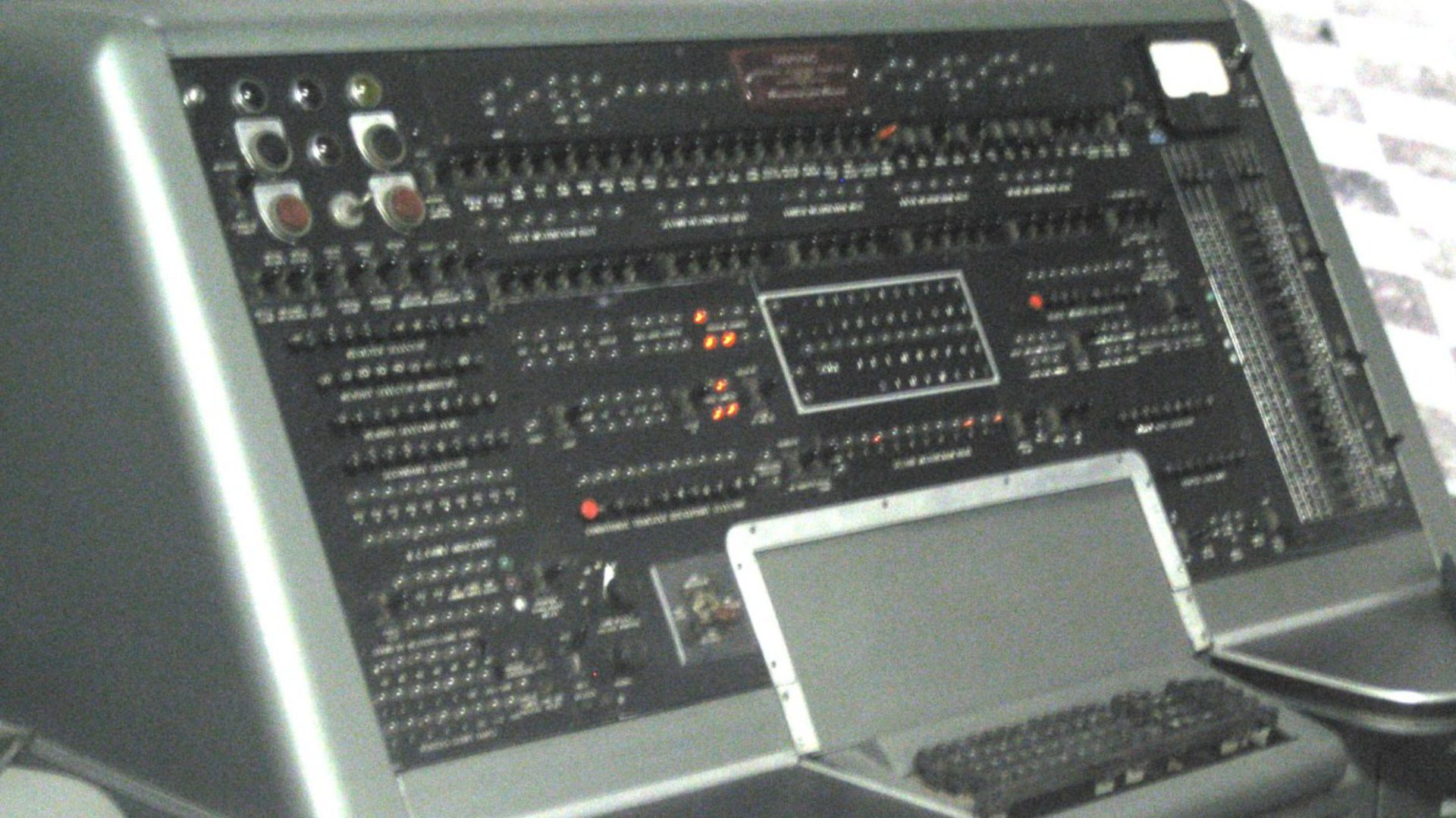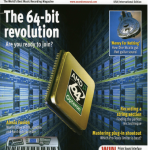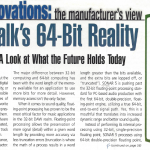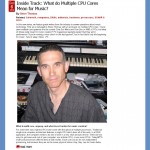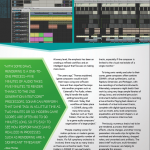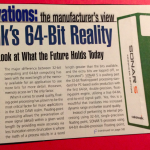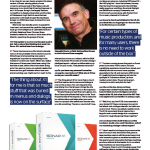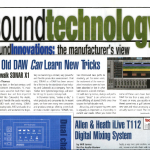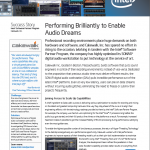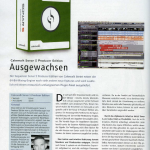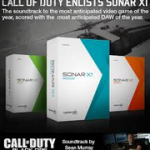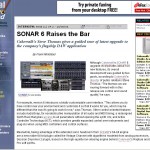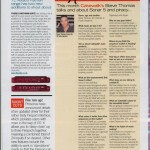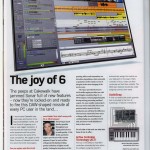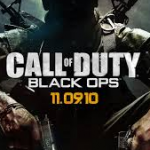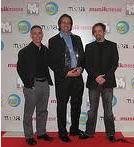January 12, 2013
Rolling back the clock to a time when SONAR, Cakewalk’s premium DAW (Digital Audio Workstation) was in an uphill battle for legitimacy among industry professionals and market-share. I saw a clear strategic path to elevate both the product and company.  Simply by amplifying existing capability brought about by faster CPU processor speeds.
Simply by amplifying existing capability brought about by faster CPU processor speeds.  What I mean here is 64-bit processing was something that was baked into the Cake so to speak. 64-bit double precision was possible with floating point architecture but, it was not until the introduction of faster multicore CPUs that computers could handle the demands of the software. Although, nothing at the onset was simple. It was an uphill battle from the start: shifting internal development and marketing resources towards innovative bleeding edge technology when there was no installed base.
What I mean here is 64-bit processing was something that was baked into the Cake so to speak. 64-bit double precision was possible with floating point architecture but, it was not until the introduction of faster multicore CPUs that computers could handle the demands of the software. Although, nothing at the onset was simple. It was an uphill battle from the start: shifting internal development and marketing resources towards innovative bleeding edge technology when there was no installed base.
 None of the leading competitors in the space, nor key audio converter component manufactures were creating 64-bit drivers, additionally, there was a big void in available 64-bit virtual instruments and audio processor software. What’s always been true in the Music Industry is many companies follow. None of the market leaders were moving forward with 64-bit compliant DAW technology, at least publicly.
None of the leading competitors in the space, nor key audio converter component manufactures were creating 64-bit drivers, additionally, there was a big void in available 64-bit virtual instruments and audio processor software. What’s always been true in the Music Industry is many companies follow. None of the market leaders were moving forward with 64-bit compliant DAW technology, at least publicly.  What was clear is Intel and Microsoft where well down the 64-bit binary path already, and in need of multi-core and multi-threaded creative software application narratives. Seizing the opportunity to get on the back of a behemoth to get the story out there, slotting first mover positioning and reaching far and wide beyond the scope of the Music Software niche was clear to me.
What was clear is Intel and Microsoft where well down the 64-bit binary path already, and in need of multi-core and multi-threaded creative software application narratives. Seizing the opportunity to get on the back of a behemoth to get the story out there, slotting first mover positioning and reaching far and wide beyond the scope of the Music Software niche was clear to me.
So it started, position papers, extensive  media tours, developer conferences, trade events, and the very important enrolling of key industry and technology journalists to tell the story. The virtues of 64-bit audio production: pristine audio quality, unlimited tracks / virtual instruments, and fast non-real-time rendering of audio projects are a given today, but not at that time.
media tours, developer conferences, trade events, and the very important enrolling of key industry and technology journalists to tell the story. The virtues of 64-bit audio production: pristine audio quality, unlimited tracks / virtual instruments, and fast non-real-time rendering of audio projects are a given today, but not at that time.  It was news, it was innovative, and it was a surprise in the eyes of many to be coming from a company not known for professional-level audio production capability. In retrospect, it’s gratifying to see the arc of the campaign that went on for 5 plus years. My final involvement culminating in a number of tactics deployed with the 2010 introduction of SONAR X1. The re-inventing, re-engineering, and re-introduction of the Companys’ DAW paradigm.
It was news, it was innovative, and it was a surprise in the eyes of many to be coming from a company not known for professional-level audio production capability. In retrospect, it’s gratifying to see the arc of the campaign that went on for 5 plus years. My final involvement culminating in a number of tactics deployed with the 2010 introduction of SONAR X1. The re-inventing, re-engineering, and re-introduction of the Companys’ DAW paradigm.  One tactical highlight among many was the ‘created in SONAR X1’ positioning of the composer Sean Murray score/soundtrack for Call of Duty: Black Ops for Activision. We knew COD was going to be big and it turned out to be the highest grossing game title of the time. Having a pulse on Artist Relations, I was able to enroll Murrays’ creative work,
One tactical highlight among many was the ‘created in SONAR X1’ positioning of the composer Sean Murray score/soundtrack for Call of Duty: Black Ops for Activision. We knew COD was going to be big and it turned out to be the highest grossing game title of the time. Having a pulse on Artist Relations, I was able to enroll Murrays’ creative work,  (which I sat on for 16 months due to nondisclosure agreement) in the launch agenda knowing the impact the highly anticipated game release would have outside the Music Industry. This and other creative narratives worked well for Intel Corporation publications such as their Solutions Briefs and acclaimed Visual Adrenaline publications.
(which I sat on for 16 months due to nondisclosure agreement) in the launch agenda knowing the impact the highly anticipated game release would have outside the Music Industry. This and other creative narratives worked well for Intel Corporation publications such as their Solutions Briefs and acclaimed Visual Adrenaline publications.
Its interesting to read about certain large  hardware and software companies championing 64-bit operating systems and applications in the last few years. Especially, after living through all the technical, migration, and acceptance issues. We were a few committed souls, fighting the fight, in what now seems to be a time so long ago. Seizing the opportunity and seeing the long tail of an innovation marketing initiative is exciting.
hardware and software companies championing 64-bit operating systems and applications in the last few years. Especially, after living through all the technical, migration, and acceptance issues. We were a few committed souls, fighting the fight, in what now seems to be a time so long ago. Seizing the opportunity and seeing the long tail of an innovation marketing initiative is exciting.
The final validation came a year or so ago, now I am on the outside, when a marketing exec for the chief competitor of the day, congratulated me on ‘job well done.’
Outcome: Broad brand & product recognition / World’s first 64-bit DAW application.
